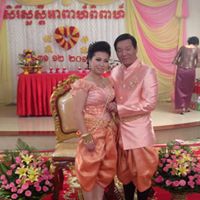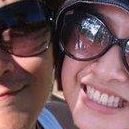Yi I Jiang
age ~52
from Morrisville, NC
- Also known as:
-
- Jin Yi
Yi Jiang Phones & Addresses
- Morrisville, NC
- Durham, NC
- Sandy, UT
- 727 600 S, Salt Lake City, UT 84102
- Salt Lake Cty, UT
- San Jose, CA
- Chapel Hill, NC
- Mountain View, CA
Education
-
School / High School:University of Washington School of Law
Ranks
-
Licence:New York - Currently registered
-
Date:2001
Medicine Doctors

Yi Xing Y. Jiang
view sourceSpecialties:
Hematology/Oncology
Work:
University Of Maryland Marlene & Stewart Greenebaum Cancer Center
22 S Greene St FL 1&, Baltimore, MD 21201
4103286373 (phone), 4103286896 (fax)
22 S Greene St FL 1&, Baltimore, MD 21201
4103286373 (phone), 4103286896 (fax)
Education:
Medical School
Shanghai Med Univ, Shanghai First Med Univ, Shanghai, China
Graduated: 1990
Shanghai Med Univ, Shanghai First Med Univ, Shanghai, China
Graduated: 1990
Procedures:
Chemotherapy
Conditions:
Gastric Cancer
Liver Cancer
Lung Cancer
Malignant Neoplasm of Colon
Malignant Neoplasm of Esophagus
Liver Cancer
Lung Cancer
Malignant Neoplasm of Colon
Malignant Neoplasm of Esophagus
Languages:
English
Spanish
Spanish
Description:
Dr. Jiang graduated from the Shanghai Med Univ, Shanghai First Med Univ, Shanghai, China in 1990. She works in Baltimore, MD and specializes in Hematology/Oncology. Dr. Jiang is affiliated with University Of Maryland Baltimore Washington Medical Center, University Of Maryland Medical Center, University Of Maryland Rehabilitation & Orthopedic Institute and University Of Maryland Saint Joseph

Yi Jiang
view sourceSpecialties:
Surgery
Name / Title
Company / Classification
Phones & Addresses
J & KONG PROPERTY MANAGEMENT, LLC
JIANG ASSET GROUP, LLC
JIANG PROPERTY, LLC
JIANG FAMILY GROUP, LLC
JIANG CAPITAL GROUP, LLC
ASIAN WOK, INC
Resumes

Intern At Ernst & Young
view sourcePosition:
Assurance Intern at Ernst & Young
Location:
New York, New York
Industry:
Accounting
Work:
Ernst & Young - Greater New York City Area since Jan 2013
Assurance Intern
Frazier & Rhea, CPAs - Greater Nashville Area Jun 2011 - Apr 2012
Intern
Sophia's Heart Foundation - Greater Nashville Area Jan 2011 - Aug 2011
Accounting Intern
Assurance Intern
Frazier & Rhea, CPAs - Greater Nashville Area Jun 2011 - Apr 2012
Intern
Sophia's Heart Foundation - Greater Nashville Area Jan 2011 - Aug 2011
Accounting Intern
Education:
Vanderbilt University - Owen Graduate School of Management 2012 - 2013
Masters of Accountancy, Auditing Vanderbilt University 2008 - 2012
Bachelor of Arts (BA), Economics Franklin High School 2004 - 2008
Masters of Accountancy, Auditing Vanderbilt University 2008 - 2012
Bachelor of Arts (BA), Economics Franklin High School 2004 - 2008
Skills:
Microsoft Excel
Chinese
French
English
Accounting
Accounts Payable
Accounts Receivable
Account Reconciliation
General Ledger
Cash Flow
Invoicing
Bank Reconciliation
Fundraising
Financial Analysis
Public Relations
Marketing
Economics
Corporate Finance
PowerPoint
Microsoft Word
Data Analysis
Auditing
Microsoft Office
Financial Reporting
Chinese
French
English
Accounting
Accounts Payable
Accounts Receivable
Account Reconciliation
General Ledger
Cash Flow
Invoicing
Bank Reconciliation
Fundraising
Financial Analysis
Public Relations
Marketing
Economics
Corporate Finance
PowerPoint
Microsoft Word
Data Analysis
Auditing
Microsoft Office
Financial Reporting
Languages:
Chinese

Senior Scientist At Lilly China R&D Center
view sourcePosition:
Senior Scientist at Eli Lilly and Company
Location:
Shanghai City, China
Industry:
Pharmaceuticals
Work:
Eli Lilly and Company - Shanghai, China since Dec 2011
Senior Scientist
Eli Lilly and Company - Indianapolis, Indiana Area Sep 2011 - Dec 2011
Scientist IV
Emory University Oct 2010 - Sep 2011
Postdoc Research Associate
Senior Scientist
Eli Lilly and Company - Indianapolis, Indiana Area Sep 2011 - Dec 2011
Scientist IV
Emory University Oct 2010 - Sep 2011
Postdoc Research Associate
Education:
Emory University 2005 - 2010
2010 Doctor of Philosophy, Organic Chemistry Fudan University 2001 - 2004
Master of Science, Natural Products Chemistry
2010 Doctor of Philosophy, Organic Chemistry Fudan University 2001 - 2004
Master of Science, Natural Products Chemistry
Skills:
Medicinal Chemistry
Organic Synthesis
Computational Chemistry
Drug Discovery
Natural Products
Organic Synthesis
Computational Chemistry
Drug Discovery
Natural Products
Honor & Awards:
2008 Emory University Osborne R. Quayle Fellowship for Excellence in Graduate Study
2004 Fudan University Exxon-Mobile Fellowship for Excellence in Graduate Research

Yi Jiang
view source
Yi Jiang
view source
Yi Jin Jiang
view source
Yi Jiang
view source
Yi Jiang
view source
Yi Jiang
view sourceLocation:
United States
License Records
Yi Jiang
Phone:
3124805113 (Work)
License #:
48200 - Expired
Category:
None on File
Type:
Retired
Us Patents
-
Dielectric Window Antennas For Electronic Devices
view source -
US Patent:8325094, Dec 4, 2012
-
Filed:Jun 17, 2009
-
Appl. No.:12/486496
-
Inventors:Enrique Ayala Vazquez - Watsonville CA, US
Gregory A. Springer - Sunnyvale CA, US
Bing Chiang - Melbourne FL, US
Douglas B. Kough - San Jose CA, US
Robert W. Schlub - Campbell CA, US
Yi Jiang - Cupertino CA, US
Rodney Andres Gomez Angulo - Sunnyvale CA, US
Ruben Caballero - San Jose CA, US -
Assignee:Apple Inc. - Cupertino CA
-
International Classification:H01Q 1/24
-
US Classification:343702, 343700 MS
-
Abstract:Logo antennas are provided for electronic devices such as portable computers. An electronic device may have a housing with conductive housing walls. A logo antenna may be formed from an antenna resonating element such as a patch antenna resonating element, a monopole antenna resonating element, or other antenna resonating element structure. A conductive cavity may be placed behind the antenna resonating element. A dielectric antenna window that serves as a logo may be used to cover the antenna resonating element. The dielectric antenna window may be mounted in an opening in the conductive housing walls. A positive antenna feed terminal may be coupled to the antenna resonating element. A ground antenna feed terminal may be coupled to the cavity and portions of the conductive housing walls. The dielectric antenna window may be shaped in the form of a logo.
-
Methods For Designing An Antenna Using An Oversized Antenna Flex
view source -
US Patent:8397370, Mar 19, 2013
-
Filed:Sep 8, 2009
-
Appl. No.:12/555651
-
Inventors:Fletcher Rothkopf - Mountain View CA, US
Brian Lynch - Portola Valley CA, US
Wey-Jiun Lin - Los Altos Hills CA, US
Kyle Yeates - Palo Alto CA, US
Yi Jiang - Cupertino CA, US -
Assignee:Apple Inc. - Cupertino CA
-
International Classification:H01P 11/00
-
US Classification:29600, 295921, 343700 MS
-
Abstract:This is directed to an antenna for use in an electronic device. The antenna can be constructed from a flex and printed trace, such that the flex is originally defined to be as large or nearly as large as possible to fit within portion of the electronic device dedicated to the antenna. This can allow the antenna trace to vary as the antenna is tuned without requiring a new flex having a different shape. In addition, this can allow the antenna design to be decoupled from the mechanical considerations related to mounting the antenna within the electronic device.
-
Electronic Devices With Parasitic Antenna Resonating Elements That Reduce Near Field Radiation
view source -
US Patent:8427376, Apr 23, 2013
-
Filed:Dec 7, 2009
-
Appl. No.:12/632697
-
Inventors:Robert W. Schlub - Campbell CA, US
David T. Amm - Sunnyvale CA, US
Omar S. Leung - Palo Alto CA, US
Brian M. King - Santa Cruz CA, US
Qingxiang Li - Mountain View CA, US
Enrique Ayala Vazquez - Watsonville CA, US
Rodney Andres Gomez Angulo - Sunnyvale CA, US
Yi Jiang - Sunnyvale CA, US
Ruben Caballero - San Jose CA, US -
Assignee:Apple Inc. - Cupertino CA
-
International Classification:H01Q 1/24
-
US Classification:343702, 343872, 343873
-
Abstract:Antennas are provided for electronic devices such as portable computers. An electronic device may have a housing in which an antenna is mounted. The housing may be formed of conductive materials. A dielectric antenna window may be mounted in the housing to allow radio-frequency signals to be transmitted from the antenna and to allow the antenna to receive radio-frequency signals. Near-field radiation limits may be satisfied by reducing transmit power when an external object is detected in the vicinity of the dielectric antenna window and the antenna. A proximity sensor may be used in detecting external objects. A parasitic antenna resonating element may be interposed between the antenna resonating element and the dielectric antenna window to minimize near-field radiation hotspots. The parasitic antenna resonating element may be formed using a capacitor electrode for the proximity sensor. A ferrite layer may be interposed between the parasitic element and the antenna window.
-
Electronic Devices With Capacitive Proximity Sensors For Proximity-Based Radio-Frequency Power Control
view source -
US Patent:8432322, Apr 30, 2013
-
Filed:Dec 7, 2009
-
Appl. No.:12/632695
-
Inventors:David T. Amm - Sunnyvale CA, US
Robert W. Schlub - Campbell CA, US
Omar S. Leung - Palo Alto CA, US
Brian M. King - Santa Cruz CA, US
Qingxiang Li - Mountain View CA, US
Enrique Ayala Vazquez - Watsonville CA, US
Rodney Andres Gomez Angulo - Sunnyvale CA, US
Yi Jiang - Sunnyvale CA, US
Ruben Caballero - San Jose CA, US -
Assignee:Apple Inc. - Cupertino CA
-
International Classification:H01Q 1/24
-
US Classification:343702, 343872, 324658
-
Abstract:An electronic device may have a housing in which an antenna is mounted. An antenna window may be mounted in the housing to allow radio-frequency signals to be transmitted from the antenna and to allow the antenna to receive radio-frequency signals. Near-field radiation limits may be satisfied by reducing transmit power when an external object is detected in the vicinity of the dielectric antenna window and the antenna. A capacitive proximity sensor may be used in detecting external objects in the vicinity of the antenna. The proximity sensor may have conductive layers separated by a dielectric. A capacitance-to-digital converter may be coupled to the proximity sensor by inductors. The capacitive proximity sensor may be interposed between an antenna resonating element and the antenna window. The capacitive proximity sensor may serve as a parasitic antenna resonating element and may be coupled to the housing by a capacitor.
-
Electronic Devices With Parasitic Antenna Resonating Elements That Reduce Near Field Radiation
view source -
US Patent:8466839, Jun 18, 2013
-
Filed:Dec 7, 2009
-
Appl. No.:12/632697
-
Inventors:Robert W. Schlub - Campbell CA, US
David T. Amm - Sunnyvale CA, US
Omar S. Leung - Palo Alto CA, US
Brian M. King - Santa Cruz CA, US
Qingxiang Li - Mountain View CA, US
Enrique Ayala Vazquez - Watsonville CA, US
Rodney Andres Gomez Angulo - Sunnyvale CA, US
Yi Jiang - Sunnyvale CA, US
Ruben Caballero - San Jose CA, US -
Assignee:Apple Inc. - Cupertino CA
-
International Classification:H01Q 1/24
-
US Classification:343702, 343872, 343873
-
Abstract:Antennas are provided for electronic devices such as portable computers. An electronic device may have a housing in which an antenna is mounted. The housing may be formed of conductive materials. A dielectric antenna window may be mounted in the housing to allow radio-frequency signals to be transmitted from the antenna and to allow the antenna to receive radio-frequency signals. Near-field radiation limits may be satisfied by reducing transmit power when an external object is detected in the vicinity of the dielectric antenna window and the antenna. A proximity sensor may be used in detecting external objects. A parasitic antenna resonating element may be interposed between the antenna resonating element and the dielectric antenna window to minimize near-field radiation hotspots. The parasitic antenna resonating element may be formed using a capacitor electrode for the proximity sensor. A ferrite layer may be interposed between the parasitic element and the antenna window.
-
Antenna With Integrated Proximity Sensor For Proximity-Based Radio-Frequency Power Control
view source -
US Patent:8577289, Nov 5, 2013
-
Filed:Feb 17, 2011
-
Appl. No.:13/029581
-
Inventors:Robert W. Schlub - Cupertino CA, US
Yi Jiang - Sunnyvale CA, US
Qingxiang Li - Mountain View CA, US
Jiang Zhu - Sunnyvale CA, US
Ruben Caballero - San Jose CA, US -
Assignee:Apple Inc. - Cupertino CA
-
International Classification:H04B 5/00
-
US Classification:455 411, 343702, 343872, 379 44, 379388
-
Abstract:An electronic device may have a housing in which an antenna is mounted. An antenna window may be mounted in the housing to allow radio-frequency signals to be transmitted from the antenna and to allow the antenna to receive radio-frequency signals. Near-field radiation limits may be satisfied by reducing transmit power when an external object is detected in the vicinity of the dielectric antenna window and the antenna. A capacitive proximity sensor may be used in detecting external objects in the vicinity of the antenna. The proximity sensor and the antenna may be formed using integral antenna resonating element and proximity sensor capacitor electrode structures. These structures may be formed from identical first and second patterned conductive layers on opposing sides of a dielectric substrate. A transceiver and proximity sensor may be coupled to the structures through respective high-pass and low-pass circuits.
-
Cavity-Backed Antenna For Tablet Device
view source -
US Patent:20110050509, Mar 3, 2011
-
Filed:Sep 3, 2009
-
Appl. No.:12/553944
-
Inventors:Enrique Ayala Vazquez - Watsonville CA, US
Robert W. Schlub - Campbell CA, US
Yi Jiang - Cupertino CA, US
Rodney Andres Gomez Angulo - Sunnyvale CA, US
Ruben Caballero - San Jose CA, US
Qingxiang Li - Mountain View CA, US -
International Classification:H01Q 1/38
H01Q 1/24 -
US Classification:343702, 343700 MS
-
Abstract:An electronic device may have a cavity antenna. The cavity antenna may have a logo-shaped dielectric window. An antenna resonating element for the cavity antenna may be formed from conductive traces on a printed circuit board. An antenna resonating element may be formed from the traces. The antenna resonating element may be mounted on an antenna support structure. A conductive cavity structure for the cavity antenna may have a planar lip that is mounted flush with an interior surface of a conductive housing wall. The cavity structure may have more than one depth. Shallower planar portions of the cavity structure may lie in a plane. The antenna resonating element may be located between the plane of the shallow cavity walls and an external surface of the conductive housing wall.
-
Antennas Mounted Under Dielectric Plates
view source -
US Patent:20120050114, Mar 1, 2012
-
Filed:Aug 27, 2010
-
Appl. No.:12/870766
-
Inventors:Qingxiang Li - Mountain View CA, US
Robert W. Schlub - Cupertino CA, US
Fletcher R. Rothkopf - Los Altos CA, US
Adam D. Mittleman - San Francisco CA, US
Yi Jiang - Sunnyvale CA, US
Emily McMilin - Mountain View CA, US
Lijun Zhang - San Jose CA, US -
International Classification:H01Q 1/24
-
US Classification:343702
-
Abstract:Electronic devices are provided that contain wireless communications circuitry. The wireless communications circuitry may include radio-frequency transceiver circuitry and antenna structures. The antenna structures may include antennas such as inverted-F antennas that contain antenna resonating elements and antenna ground elements. Antenna resonating elements may be formed from patterned conductive traces on substrates such as flex circuit substrates. Antenna ground elements may be formed from conductive device structures such as metal housing walls. Support and biasing structures such as dielectric support members and layer of foam may be used to support and bias antenna resonating elements against planar device structures. The planar device structures against which the antenna resonating elements are biased may be planar dielectric members such as transparent layers of display cover glass or other planar structures. Adhesive may be interposed between the planar structures and the antenna resonating elements.
Lawyers & Attorneys

Yi Jiang - Lawyer
view sourceAddress:
Ibm (China) Company Limited
1063617015 (Office)
1063617015 (Office)
Licenses:
New York - Currently registered 2001
Education:
University of Washington School of Law
News

For China's stressed-out students, all is not well
view source- Rote learning made me rigid, stupid and I ended up like a machine, wrote one blogger, named Nei Yi Guo Jiang. I felt like a real idiot compared to the ...

Far east movement: Chinese models dominate Givenchy couture
view source- Chinese homegrown muses like Ming Xi, Liu Wen, Shu Pei Qin, Sun Fei Fei, Du Juan, Jiang Xiao Yi stand side by side Japan's Ai Tominaga, Tao Okamoto and ...

MOI proposes legal basis for absentee voting
view source- According to MOI Minister Jiang Yi-huah, in past presidential elections people have spent much time and money returning to their registered place of ...

Givenchy Haute Couture Spring Summer 2011: Asian Models in Japanese Style
view source- ... showed off exclusively by Asian models including Chinese (Ming Xi, Liu Wen, Shu Pei Qin, Sun Fei Fei, Du Juan, Jiang Xiao Yi), Japanese (Ai Tominaga, ...

Talk of the day -- Record low birth rate causes concern
view source- Interior Minister Jiang Yi-huah said Saturday that he, along with other government officials, had met recently with President Ma Ying-jeou to discuss ...

Legislators slam Ma over PRC tycoon's visit
view source- Pan said Minister of the Interior Jiang Yi-huah () ought to be ashamed because of the government's inadequate welfare system. ...

Bus company faking departures for subsidies
view source- Minister Jiang Yi-huah said yesterday the MOI will start doing random check-ups and if any illegal business practices are observed, subsidies from the local ...

Wheelchair-access to be mandatory at restaurants
view source- Minister of the Interior Jiang Yi-huah () said the ministry had decided during a routine meeting last week to complete revisions of relevant laws to ...

Mei Yi Jiang
view source
Yi Yang Jiang
view source
Yi Lang Jiang
view source
Yi Yuan Jiang
view source
Elaine Yi Jiang Bao
view source
Yi Jiang
view source
Yi Jiang
view source
g Yi Jiang
view sourceYoutube
Myspace
Plaxo

Yi Jiang
view sourceBelgium
Flickr
Googleplus

Yi Jiang
Lived:
Mountain View, CA
Nanjing, China
Nanjing, China
Work:
Playdom-Disney - UI Designer (4)
Education:
Academy of Art University

Yi Jiang
Work:
ALU - SW Engineer (2008)
Education:
BUPT - TE
Tagline:
A common daddy.

Yi Jiang
Work:
Cisco Systems, Inc. - Systems Engineer (2006)

Yi Jiang (姜艺)

Yi Jiang

Yi Jiang

Yi Jiang

Yi Jiang
Get Report for Yi I Jiang from Morrisville, NC, age ~52



Zhan... Jie-After Tomorrow - [HQ](pinyin)Zhan... Jie-After Tomorrow -](https://i.ytimg.com/vi/xMqetbHcMSs/0.jpg)












